




An Introduction to the Seven Circle Theorems
In geometry, we examine several circle theorems related to the various elements of a circle, including a chord, segments, etc. Let's first define a circle before moving on to talk about the circle theorems. A circle is a closed, two-dimensional figure where every point in the plane is equally spaced from a central point. The fixed point and fixed distance are both referred to as the centre and radius, respectively. We will examine many circle theorems used in geometry to address a variety of issues in this article.
History of the Euclid
Ancient Greek mathematician Euclid was a logician and geometer. The Elements book, often regarded as the "father of geometry," laid the theoretical groundwork for the discipline's development up until the early 19th century.

Euclid "Father of Geometry" (300 BCE)
Name: Euclid
Born: Around 325 BC
Died: Around 265 BC
Field: Mathematics
Nationality: Greek
What are the Seven Circle Theorems?
The statements of the seven circle theorems are:
A chord's angle at its centre is twice as large as its angle at its circumference.
The diameter at the circumference forms a right angle with the surrounding plane.
The angles that the same arc subtends at its circumference are equal.
At the circle's centre, two equal chords subtend two equal angles.
Two chords are equal if the angles they subtend at the centre are also equal.
In a cyclic quadrilateral, the opposing angles are supplementary.
At the point of contact, there is a 90-degree angle between the radius and the tangent.
Circle Theorems Proofs
Let's prove some of the crucial circle theorems we covered above in this part.
Theorem 1: A chord's angle at its centre is twice as large as its angle at its circumference.
Proof: Take a look at the circle below, where an arc (or segment) AB subtends ∠AOB at the circle's centre O and ∠ACB at a point on its circumference. We must demonstrate that
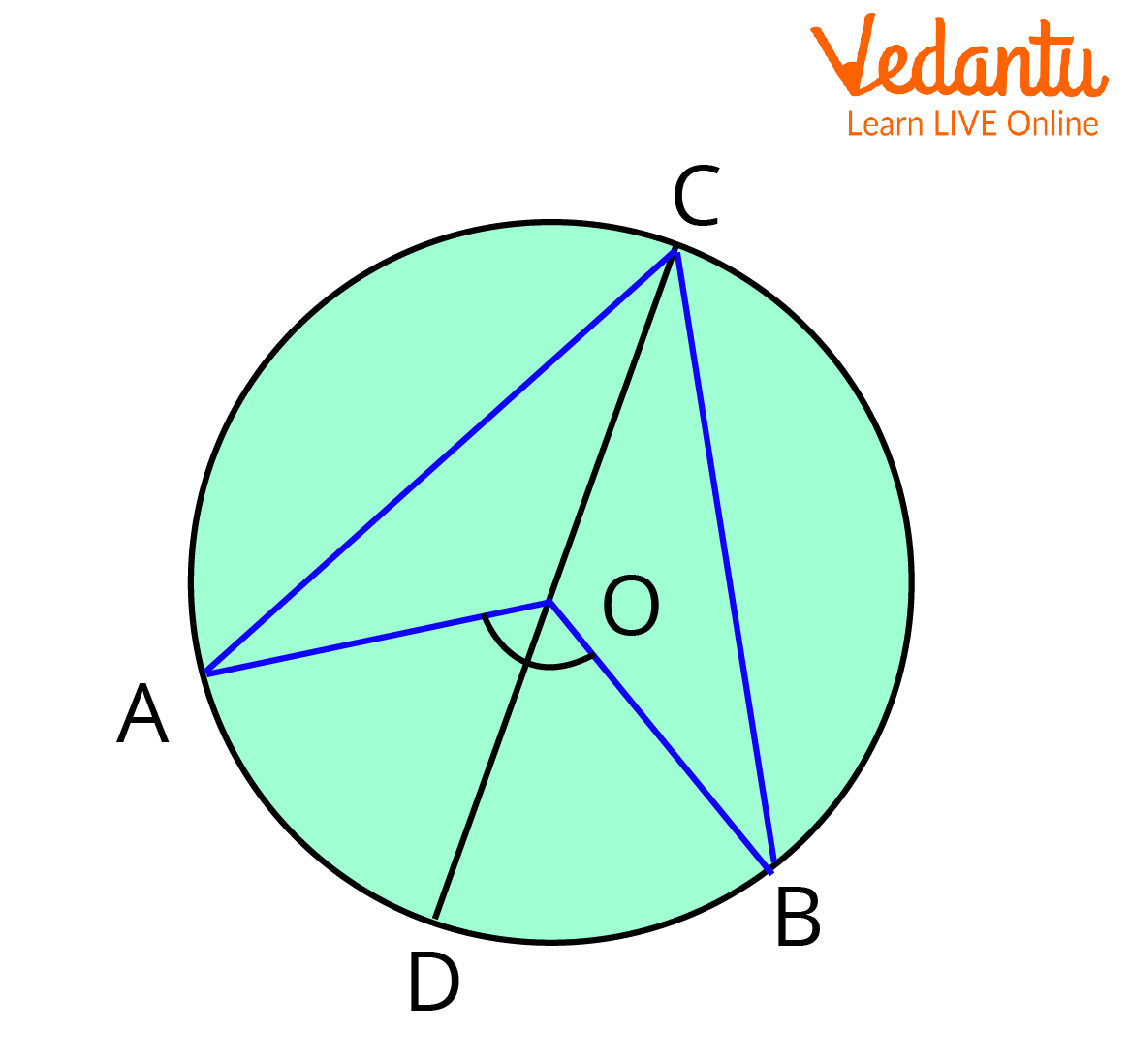
Seven Circle Theorem 1
Because
In triangle COB,
In triangle COB,
OC = OB (Radius)
Thus, triangle COB is an isosceles triangle.
Therefore,
From equations (1) and (2),
Similarly,
Equations (3) and (4) combined:
Hence Proved.
Theorem 2: The diameter at the circumference forms a right angle with the surrounding plane.
Proof: Take a look at the illustration below, where AB represents the circle's diameter. We must demonstrate that
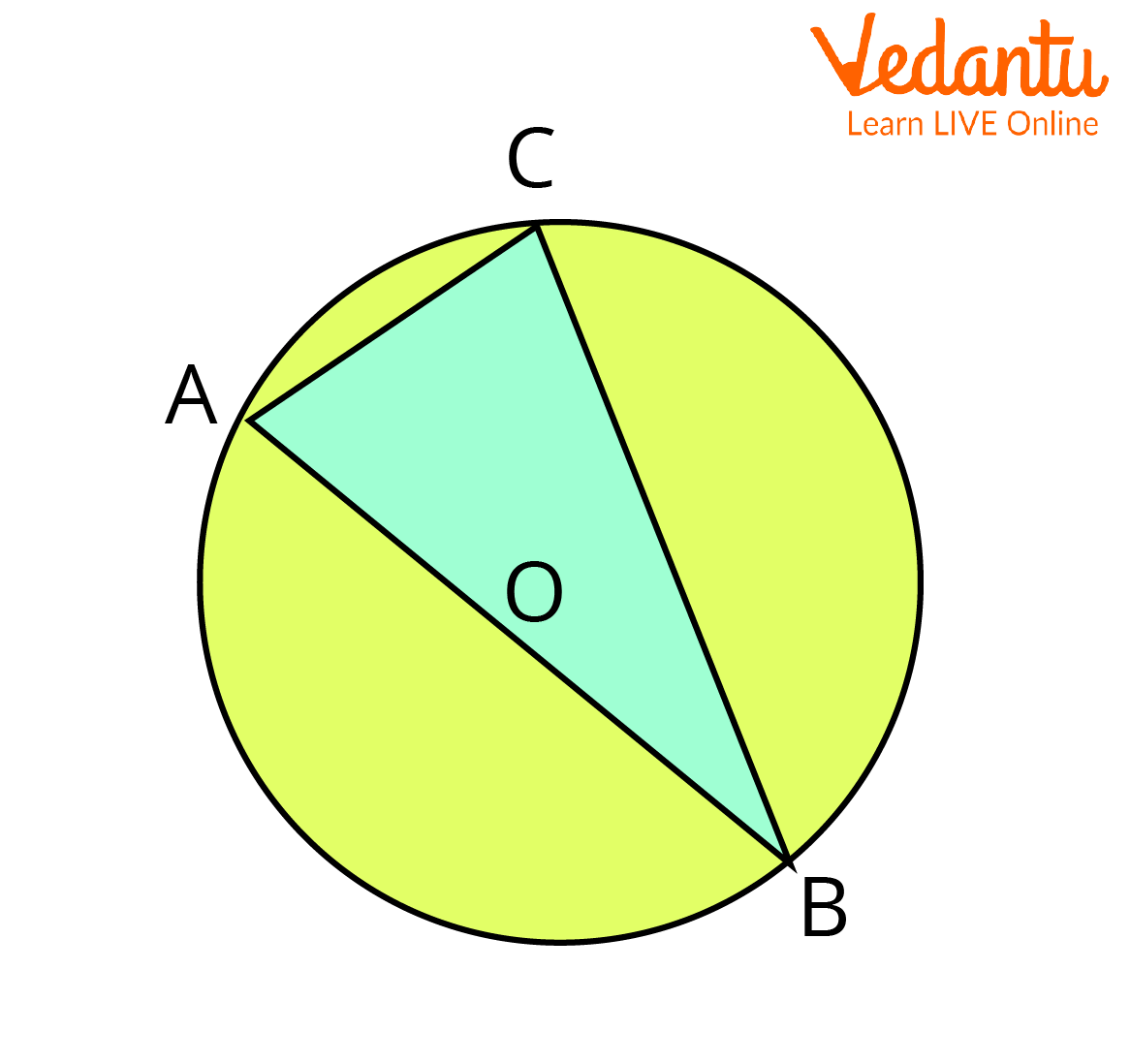
Angle in a Semicircle
Hence Proved.
Theorem 3: The angles that the same arc subtends at its circumference are equal.
Proof: Take a look at the illustration below, which depicts an arc AB subtending angles ACB and ADB at two arbitrary places on the circle, C and D. The circle's centre is O.
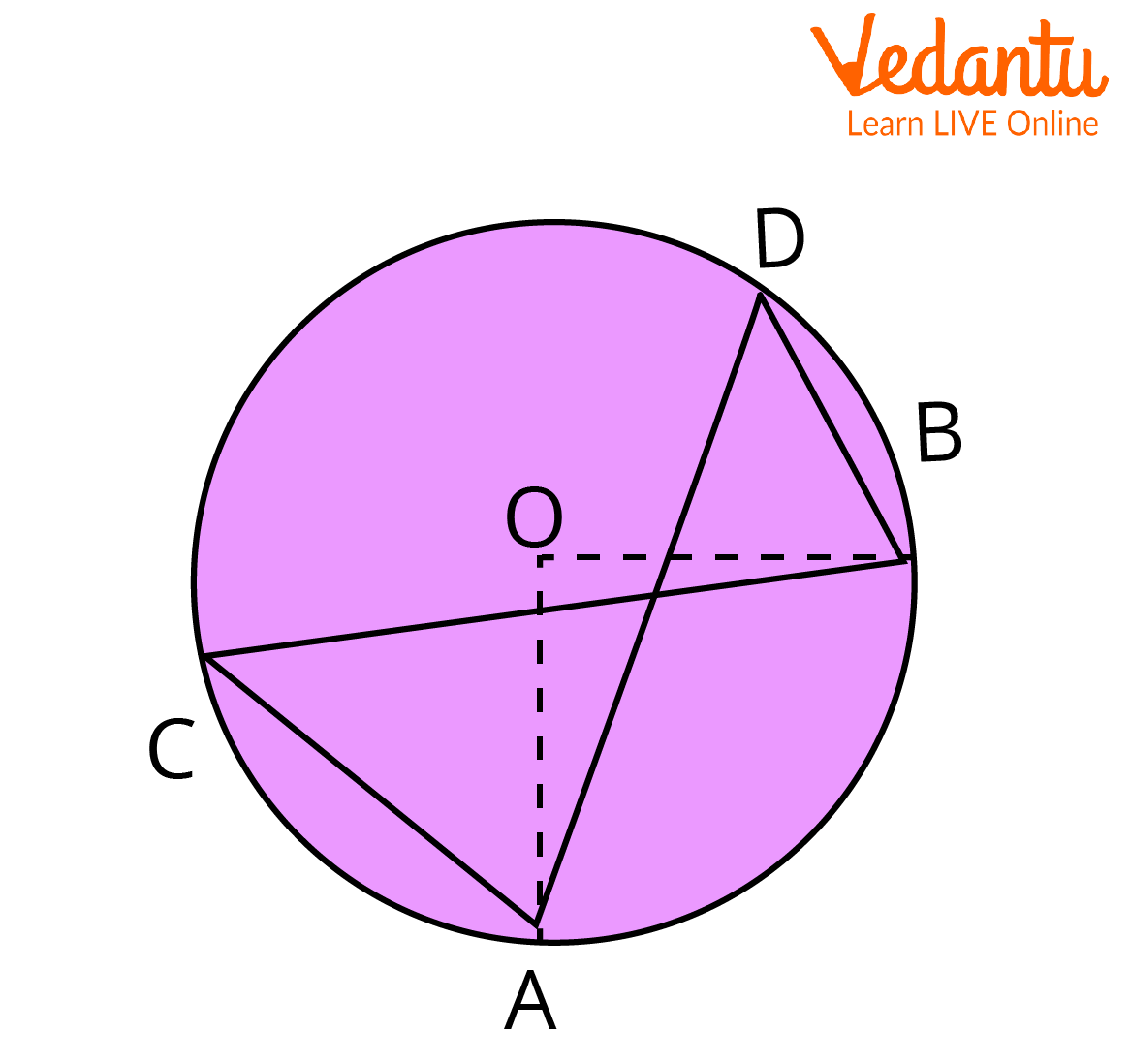
Angles in The Same Segment of The Circle
We must demonstrate that
The angle a chord subtends at the centre of a circle is twice as large as the angle it subtends at the circumference, according to the circle theorem.
Equation (1) and equation (2) give us
Hence Proved.
Solved Examples
1. Consider a circle with the centre O. Utilising circle theorems, determine the value of x.
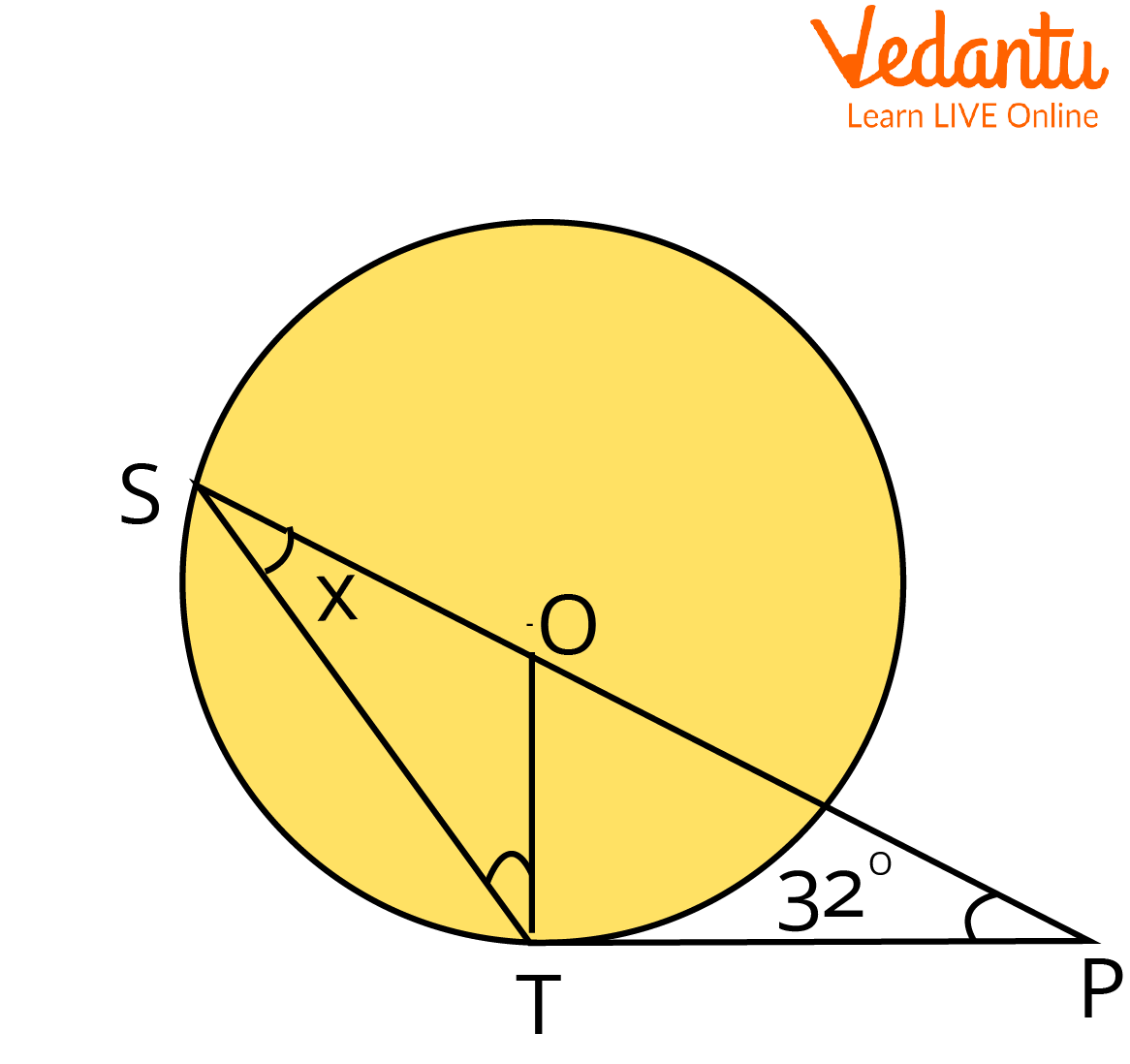
A Circle
Ans: A circle with the centre O is supplied, and since the radii OS and OT are equal, OS = OT. OTP = 90° is obtained by using the circle theorem, which states that the angle between the radius and the tangent at the point of contact is 90 degrees. Using the angle sum theorem and the triangle OTP, we have
Since
By the exterior angle theorem,
2. Assume the circle with O as the centre is shown below. Using the circle theorems, determine the value of POR.
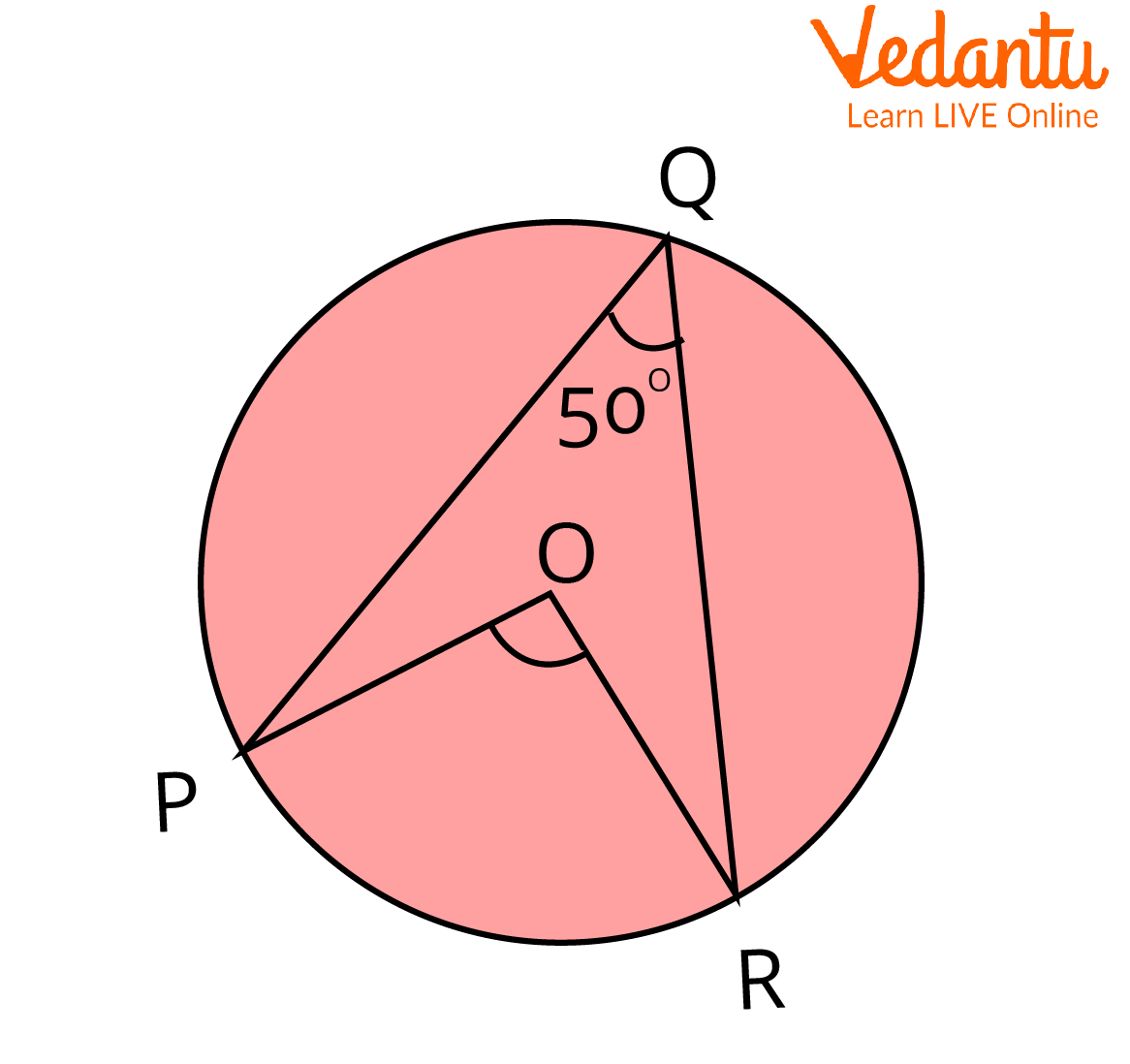
A Circle with Centre O
Ans: The circle theorem, which states that a chord's angle at the centre is twice that at the perimeter, will be used to determine the value of angle POR. Thus,
Given that
3. Consider the circle with O as the centre is shown below. Using the circle theorems, determine the angle x.
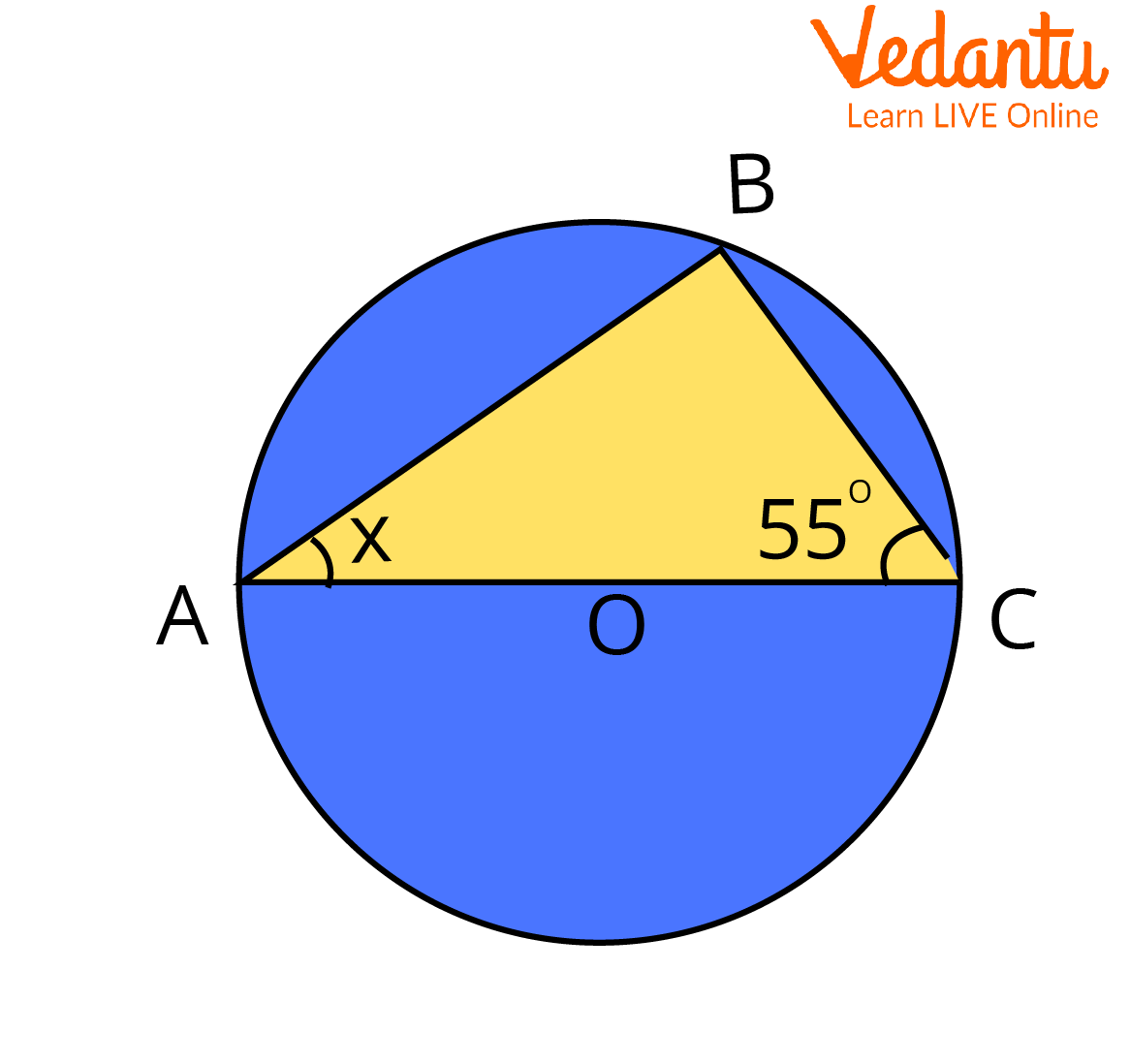
Unknown Angle x
Ans: The angle subtended by the diameter at the circumference is a right angle, according to the circle theorem, hence
Applications of the Seven Circle Theorems
Circle theorems are required to address a variety of geometric issues. When we draw angles and lines inside of a circle, we can infer several patterns and theorems that are useful in both theoretical and practical contexts.
Important Points to Remember
Geometric theorems about circles are essential conclusions that can be utilised to answer a variety of geometrical problems.
Angles subtended by the same arc at the circumference are equal.
Conclusion
The article went into detail about circles. The topic of the seven circle theorems is discussed. Each of the seven has a unique place in Mathematics. Geometrical circle theorems pertain to the several parts of a circle, such as a chord, segments, sector, diameter, tangent, etc.






FAQs on Seven Circle Theorems
1. In Circle Theorems, what does subtend mean?
Geometrical assertions known as "circle theorems" outline crucial conclusions about circles. These theorems provide significant information regarding the various parts of a circle, including the chord, segments, sector, diameter, etc. And in circle theorems, "subtend" refers to an angle that is subtended in opposition to an arc or a chord. It is implied when we say that an angle is subtended by an arc that the angle is formed by the lines from the arc on the other side of the circle.
2. What do you understand by SAS Congruence?
Congruent refers to figures that are identical, especially with regard to their size and shape. Congruence describes the relationship between two congruent figures. And to describe the connection between two congruent figures, the phrase SAS congruence, also known as Side Angle Side congruence, is employed. This standard states that two triangles are congruent if their two sides and angle between these two are identical to each other.
3. What do angles mean?
When two lines meet at a point, an angle is created. An "angle" is the measurement of the "opening" between these two rays. It is represented by the symbol ∠. Right angles, acute angles, obtuse angles, straight angles, reflex angles, and complete angles are the six different types of angles. The circularity or rotation of an angle is often measured in degrees and radians. Angles are a common occurrence in daily life. Angles are used by engineers and architects to create highways, structures, and sports venues.




































